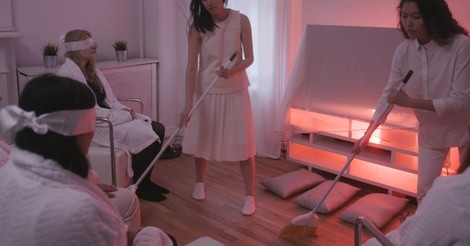Your podcast discovery platform
Curious minds select the most fascinating podcasts from around the world. Discover hand-piqd audio recommendations on your favorite topics.

piqer for: Global finds Technology and society
Prague-based media development worker from Poland with a journalistic background. Previously worked on digital issues in Brussels. Piqs about digital issues, digital rights, data protection, new trends in journalism and anything else that grabs my attention.
Video: The Internet Whispers
“In an era when we eat our meals in front of a screen, when kids spend more time on their phones than they do with their friends, and when neighbours rarely stop to say hello, this seems to be one instance where the Internet is introducing some of that human connection back into our lives… one gentle whisper at a time,” reporter Scaachi Koul narrates the end of the first episode of Buzzfeed's new docu-series.
What does Koul mean by "gentle whisper"? She refers to ASMR videos that feature soothing stimuli, such us soft talking, light touches or repetitive movements. The videos are meant to relax the mind, relieve stress or induce sleep and for some, trigger a pleasant physical sensation called Autonomous Sensory Meridian Response, also referred to as “head tingles” or “brain orgasm".
Over the past few years, ASMR has gained enormous popularity online. In fact, there are over 11 million Youtube videos with the acronym in the title, from finger tapping to towel folding. The whole phenomenon is very bizarre, which makes it a perfect topic for Buzzfeed's weekly series: streaming on Netflix, 15-minute docus follow the Buzzfeed journalists as they craft stories about ASMR, men's rights, "DeepFakes" and other attention-grabbers from "weird corners of the internet".
After Vox's show Explained (reviewed some time ago), Follow This is yet another collaboration between a newsroom and Netflix. But unlike Vox’s focus on explaining the newsworthy, Buzzfeed takes the viewers behind the scenes of its editorial process. Here, not the topic itself, but rather reporters like Koul are at the centre of the attention. You shouldn't expect in-depth analysis—for example, Koul interviews one ASMR star, one scientist and one superfan. Still, it's somehow refreshing to see real journalists at work, instead of another set of unrealistic fictional characters (as in House of Cards or Sharp Objects, for example), even if they are mostly captured in meetings, making calls or typing at their computer.